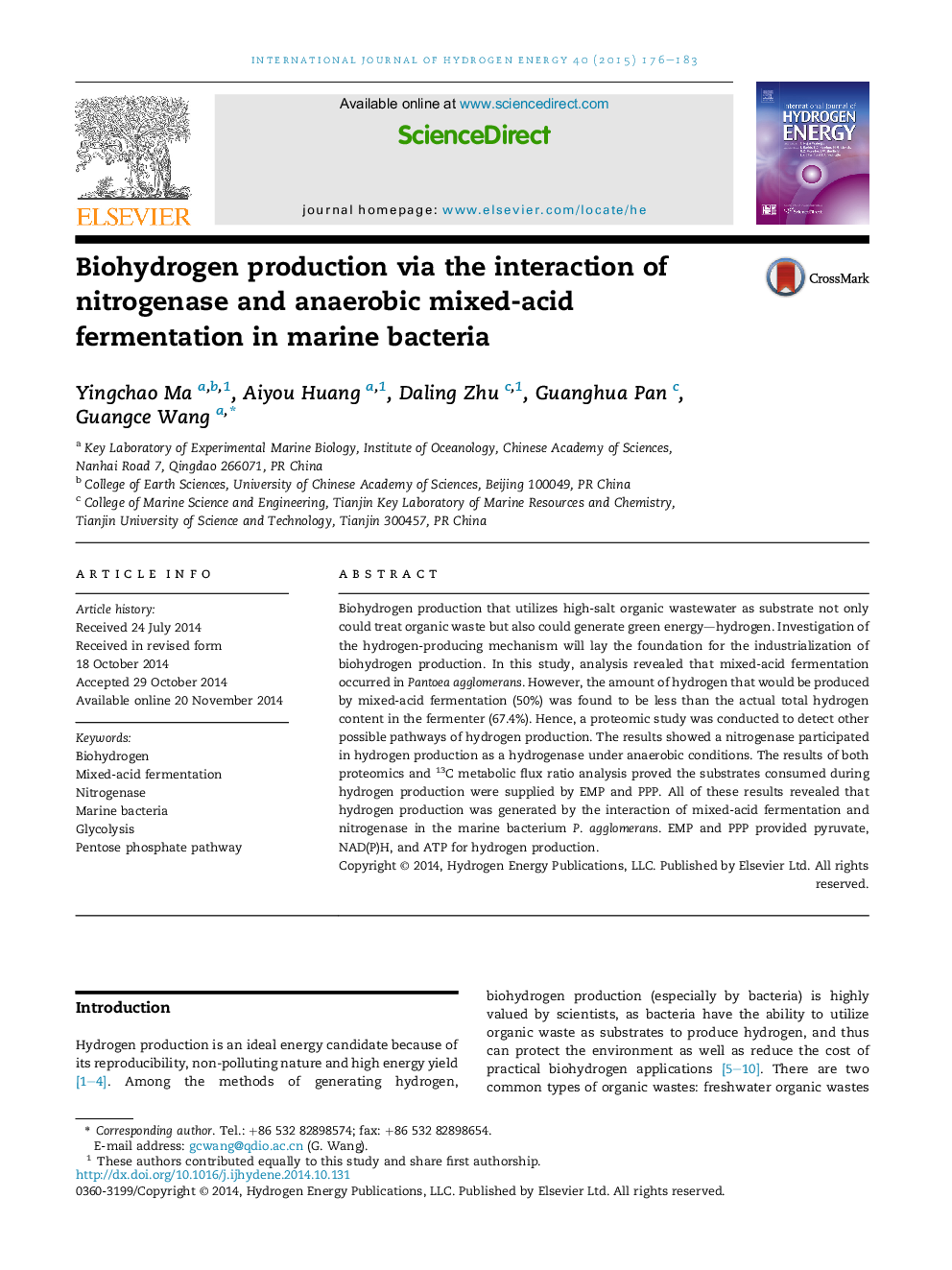| Article ID | Journal | Published Year | Pages | File Type |
|---|---|---|---|---|
| 7716732 | International Journal of Hydrogen Energy | 2015 | 8 Pages |
Abstract
Biohydrogen production that utilizes high-salt organic wastewater as substrate not only could treat organic waste but also could generate green energy-hydrogen. Investigation of the hydrogen-producing mechanism will lay the foundation for the industrialization of biohydrogen production. In this study, analysis revealed that mixed-acid fermentation occurred in Pantoea agglomerans. However, the amount of hydrogen that would be produced by mixed-acid fermentation (50%) was found to be less than the actual total hydrogen content in the fermenter (67.4%). Hence, a proteomic study was conducted to detect other possible pathways of hydrogen production. The results showed a nitrogenase participated in hydrogen production as a hydrogenase under anaerobic conditions. The results of both proteomics and 13C metabolic flux ratio analysis proved the substrates consumed during hydrogen production were supplied by EMP and PPP. All of these results revealed that hydrogen production was generated by the interaction of mixed-acid fermentation and nitrogenase in the marine bacterium P. agglomerans. EMP and PPP provided pyruvate, NAD(P)H, and ATP for hydrogen production.
Keywords
Related Topics
Physical Sciences and Engineering
Chemistry
Electrochemistry
Authors
Yingchao Ma, Aiyou Huang, Daling Zhu, Guanghua Pan, Guangce Wang,
